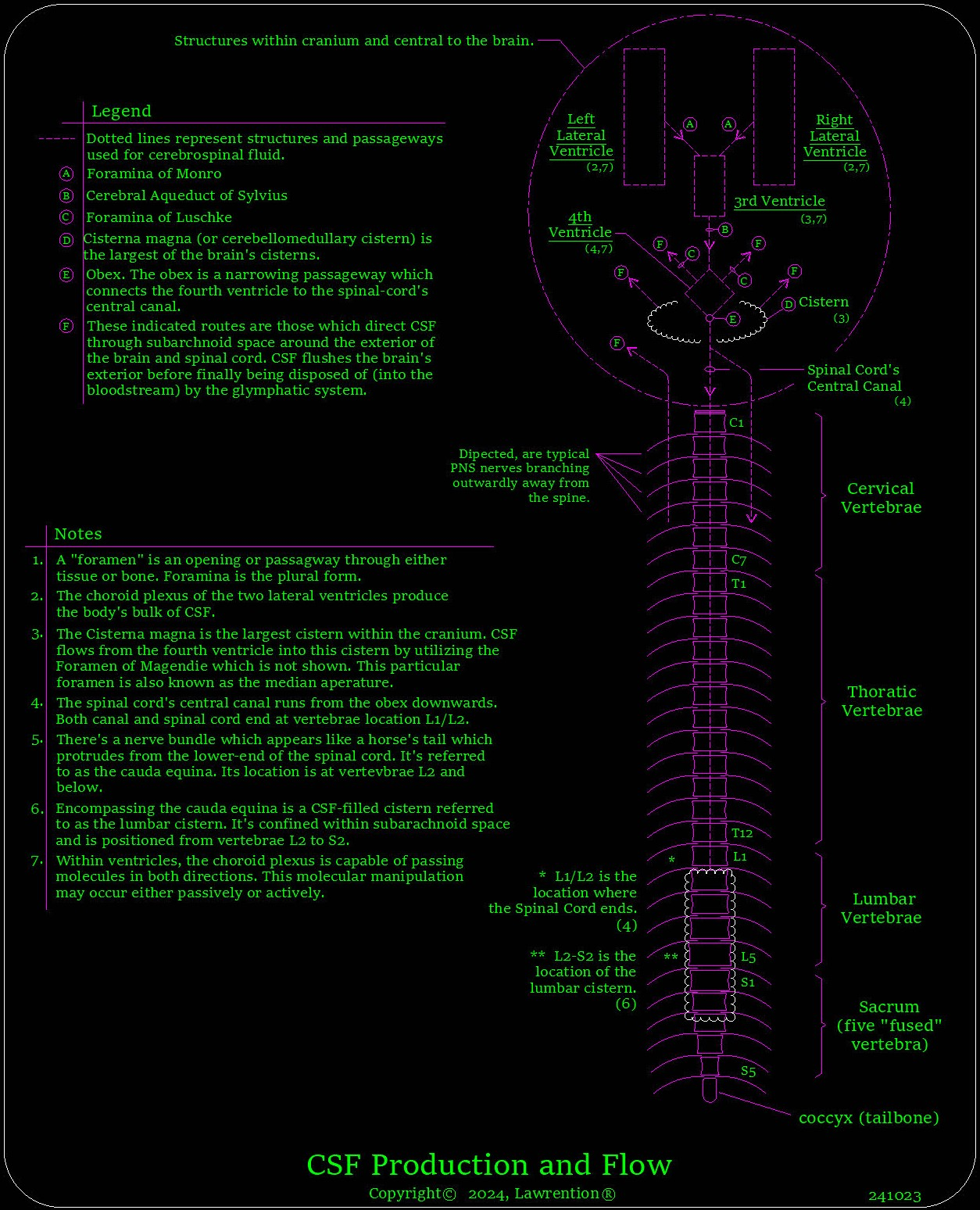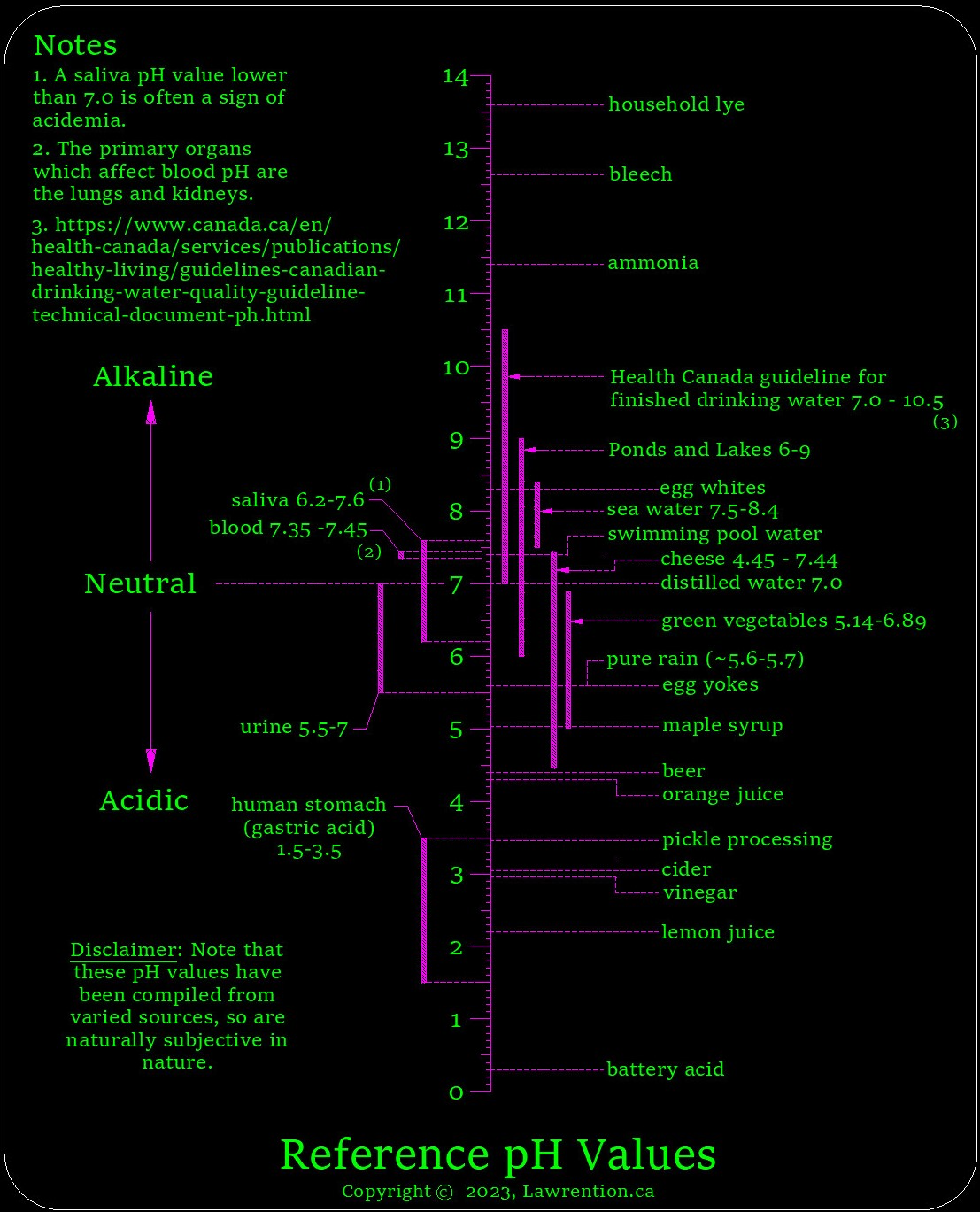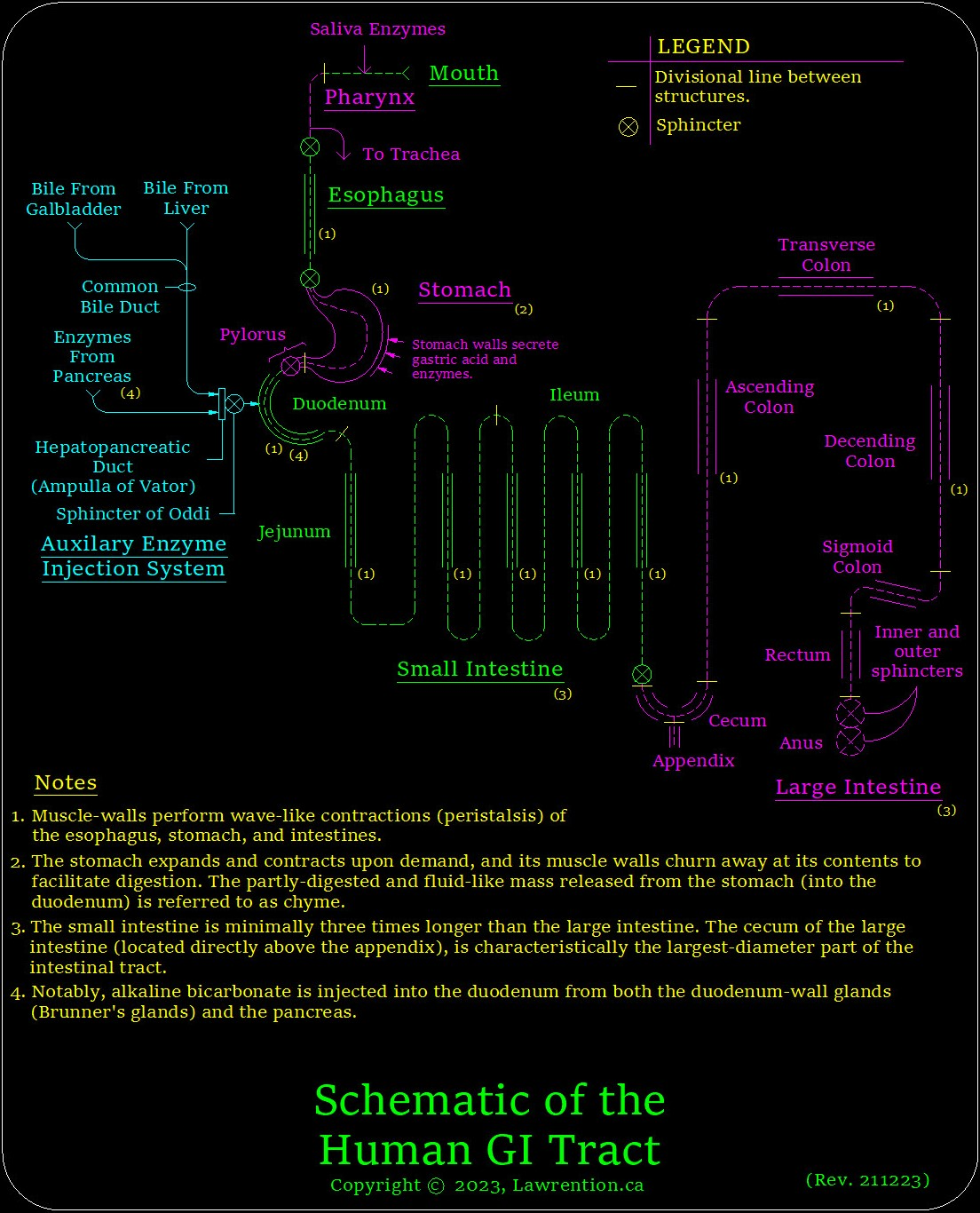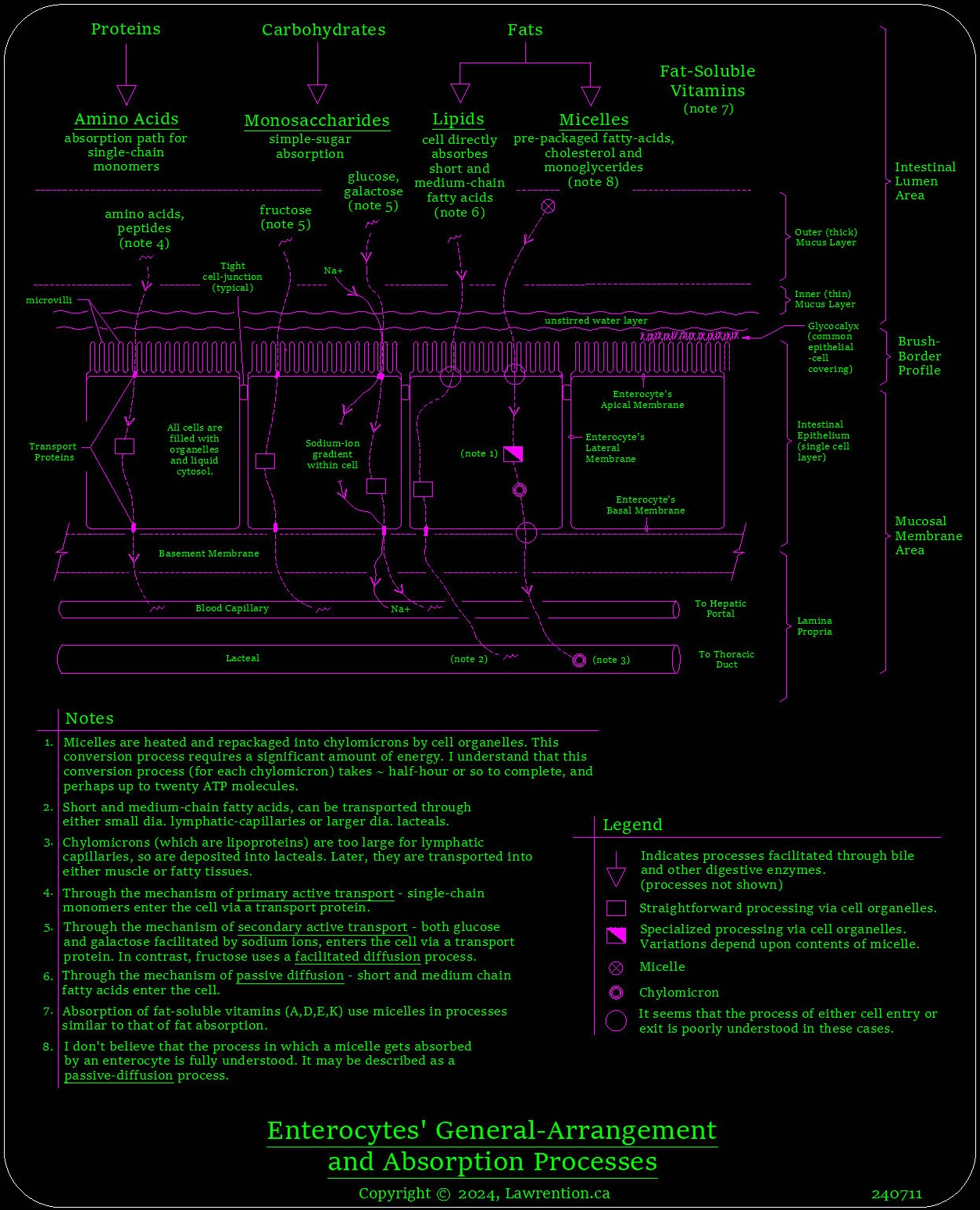An Introduction
To Cerebrospinal Fluid
Section 5.1
(Published May 11th, 2024; Rev. 241023)
| 🇨🇦 | 🕆 | 🇨🇦 | 🕆 | 🇨🇦 | 🕆 | L🇨🇦 |
5.1 Introduction
This section serves as an introduction to cerebrospinal Fluid (CSF). Cerebrospinal fluid is quite important, as it nourishes our central-nervous-system. Further; it's not only the foundation for our immune system, but is also the basis of our consciousness self.
5.1.1. pH as a Means of Control
By having an aqueous fluid maintain a specific pH value, it serves as means for regulating the rate of electron-to-electron interactions. This is highly significant, since electrons are the primary-means of spiritual communications within biological organisms like ourselves.
Under the earlier section of pH, I had stated that pH basically represents a ratio of free-protons versus free-electrons within an aqueous solution. As a consequence, whenever their ratio changes - as does their effective communication-rate within the solution.
Communication-wise, and broadly speaking - there are only three different scenarios within aqueous solutions: acidic, neutral, and alkaline.
Within an alkaline solution, the concentration of free-electrons overwhelms the concentration of free protons. Under this scenario, electron inter-communications are at the peak of activity. The higher the pH, the faster the communication-rate.
Within an acidic solution, the concentration of free-electrons is substantially less than the concentration of free protons. Here, ion inter-communication occurs at rates significantly less than the previously-described alkaline solution. Nonetheless, these electrons continually churn up their fair share of letter-like particles.
In the previous two scenarios, there is an imbalance of “free” electrons versus “free” protons. Since electrons and protons have opposing elemental charges, they are attracted to each other on a one-to-one basis. As a consequence, any imbalance creates a competition for dance-partners of an opposing charge. Further, it’s logical to conclude that since electrons are extremely light as compared to protons - it’s the electrons which do most of the moving.
We have now looked at two different cases of electron-motility under both alkaline and acidic environments. So what do you think occurs to an electron’s motility within a neutral-pH solution?
Since there's basically an equal number of free-electrons versus free-protons in a neutral-pH solution - there is virtually no competition between electrons looking for dance partners. Here, each electron pairs up with one dance partner (proton / positive-ion) and stays put. Hence; under a 50/50 ratio of negatively-charged and positively-charged particles.... ionic interactions become highly localized.
Freezing an Electron's Motility
For all intents and purposes, our preceding scenario for a neutral-pH-solution essentially freezes electrons in their tracks. Here, these electrons only flow if the liquid itself is flowing. If the liquid's flow stops, electron-flow stops. This mechanism virtually traps electrons within their local environment. So, regardless of the fact that electrons are super-light (merely 1/1,836th the mass of a proton) and travel relative to the speed of light - while they're within a neutral-pH solution they are effectively frozen in time.
This phenomenon is an important means for enabling a biological organism to control its electron-flow. This can mitigate a potentially damaging series of uncontrollable chemical-reactions. Further; this scenario remains in effect regardless of which chemical-species is contained within the neutral-pH solution.
Interestingly; another way of looking at what I’ve just described, agrees with the fact that pure-water having a neutral-pH - is a known non-conductor of electricity, and inhibits electron flow (electrical current).
Section 5.1.2 Cerebrospinal Fluid (CSF)
Cerebrospinal fluid is a clear ultra-filtrate that is derived directly from blood-serum and baths the outer surfaces of both the brain and spinal cord. These outer surfaces are referred to as pia matter.
One of CSF's most basic functions is to protect the CNS from mechanical force, as CSF serves to cushion the central-nervous-system from hard and sharp surfaces. Note that the brain itself continually floats within cerebrospinal fluid.
The spinal cord goes from the brain-stem to about three-quarters of the way down one’s back into the lumbar area. So, the spinal-cord doesn't run the full length of the spinal column.
Branching out from between the spinal column's vertebrae are nerves which communicate to the non-CNS parts of the body. As a group, these protruding nerves are referred to as the peripheral nervous system (PNS).
Cerebrospinal Fluid Locations
Cerebrospinal fluid resides within subarachnoid space that generally encapsulates the whole central nervous system. This Subarachnoid space is basically the CSF-filled areas between pia matter of the central nervous system (pia matter of both brain and spinal cord) and its progressively harder protective coatings (arachnoid matter and dura matter).
Subarachnoid space includes regions listed below.
- There are numerous similarly-shaped cisterns that seem to be arbitrarily distributed about the brain's surface. These are part-and-parcel of the brain’s contoured structure and look similar perhaps as fabric-like wrinkles.
- In addition to the aforementioned cisterns, there are also some uniquely-shaped cisterns about the brain's perimeter. I won't bore you with all of their names here, but merely understand that they are appropriately named due to their location. The largest of these subarachnoid cisterns is the cisterna magna.
- There's also a CSF-filled pocket referred to as the lumbar cistern. This cistern is located where the nerve fibers branch out from the base of the spine.
Non-subarachnoid space containing CSF, includes the brain's four ventricles and the spinal-cord’s central canal.
Ventricles are four hollow structures within the brain’s center. The first and second ventricle are essentially mirror images of one another. These two ventricles are also referred to as the lateral ventricles. These lateral ventricles are comparatively much larger than the remainder.
The two lateral ventricles drain directly into the third ventricle. This third ventricle is located between the first and second, and supplies CSF to the fourth ventricle. This fourth ventricle is located below the first three, and directs CSF into the spinal-cord’s central canal.
Housed within each of these ventricles are specific areas of highly specialized cell-clusters referred to as choroid plexus. It’s commonly understood that most-all CSF production is excreted from these choroid-plexus cells. Once excreted, CSF travels through the brain’s remaining ventricles and then enters into either subarachnoid space or the spinal-cord's central canal.
In the case of the spinal cord, CSF travels downwardly along the back of spinal cord in addition to its central canal. This CSF later returns up the front of the spinal-cord through subarachnoid space.
The highly specialized and tightly-knitted cells of the choroid plexus, filter out red-blood cells and other large molecules from pulsating systemic-blood. What remains is the cerebrospinal fluid itself - a clear ultra-filtrate. In many ways CSF is similar to that of blood serum. However; spiritual-wise (as we will see in the next section) - it is very different.
Cerebrospinal-Fluid Flow
 Schematic of Cerebrospinal-Fluid Flow
Schematic of Cerebrospinal-Fluid FlowComposition of Cerebrospinal Fluid
CSF is a clear fluid with a very narrow range of alkaline pH. On a daily basis, the body produces approximately 600 milliliters of this fluid.
Carefully consider as to how close the pH-value of each bodily-fluid is with respect to neutral-pH. CSF nominally ranges from 7.28 to 7.32 on the scale and has a very tight span of 0.04. Its span is so narrow that it’s often transcribed as having a fixed pH of 7.3.
|
Bodily Fluid |
pH Range |
Nominal pH Span |
|
Cell's Cytosol |
7.0 to 7.4 * |
0.40 |
|
Systemic Blood |
7.35 to 7.45 |
0.10 |
|
Cerebrospinal Fluid |
7.28 to 7.32 |
0.04 |
|
Saliva |
6.2 to 7.6 |
1.40 |
|
Urine |
5.5 to7.0 |
1.50 |
*The pH indicated for a cell’s cytosol is nominal. Certain cellular compartments and organelles experience wider variations of pH than that shown.
Blood serum is basically blood without all of its red blood cells (RBCs) and clotting factors. Under normal physiological conditions, CSF is similar to that of blood serum, albeit stripped of most proteins. Notably, glucose concentrations within CSF are approximately sixty-percent to that of blood serum.
The concentration of white blood cells (WBCs) within an adult’s bloodstream averages between 4,500 and 11,000 per cubic mm. Conversely, there’s quantities of only five or less WBCs per cubic mm within CSF.
There are slight concentration-variations of electrolytes between the blood and CSF. As well, note that the concentration of chloride within CSF is slightly greater than that of blood-serum.
Full Disclosure Statement: Please be well aware that I am not a health professional. The information herein is based upon personal life-experiences, research, and knowledge of certain topics in which the Lord has graciously guided me through.
As always, heed the advice of your physician and ask for their advice prior to varying either diet or lifestyle. Note that new and unique information herein, has yet to be evaluated by the health-care industry.
When taking dietary supplements, start slow and work your way up to the recommended dose in order to ensure that there are no allergic reactions or other negative side-effects. Keeping in mind, that nutritional companies exist to be profitable as well; so always use discretion.
Lawrention






